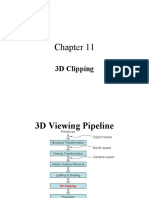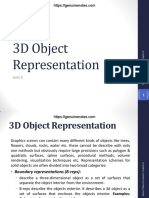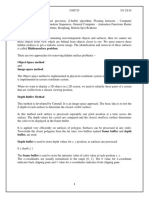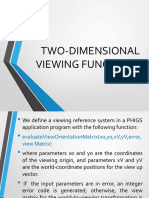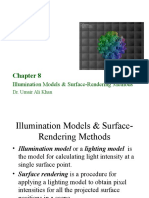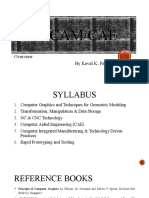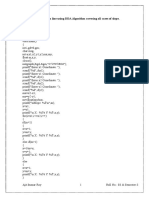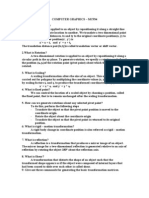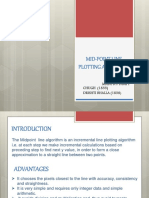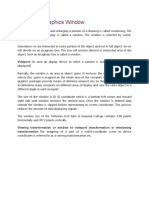0% found this document useful (0 votes)
219 views6 pagesWindow To Viewport Transformation
The document explains the concepts of Window and Viewport in the context of coordinate transformations for displaying images. It describes the process of Window to Viewport Transformation, which involves mapping a selected area of a World Coordinate (Window) to a specific area on a display device (Viewport) through operations like translation, rotation, and scaling. Additionally, it outlines the requirements for maintaining relative placement during this transformation and poses a question regarding a normalized transformation example with specific coordinates.
Uploaded by
pkgamer808Copyright
© © All Rights Reserved
We take content rights seriously. If you suspect this is your content, claim it here.
Available Formats
Download as PDF, TXT or read online on Scribd
0% found this document useful (0 votes)
219 views6 pagesWindow To Viewport Transformation
The document explains the concepts of Window and Viewport in the context of coordinate transformations for displaying images. It describes the process of Window to Viewport Transformation, which involves mapping a selected area of a World Coordinate (Window) to a specific area on a display device (Viewport) through operations like translation, rotation, and scaling. Additionally, it outlines the requirements for maintaining relative placement during this transformation and poses a question regarding a normalized transformation example with specific coordinates.
Uploaded by
pkgamer808Copyright
© © All Rights Reserved
We take content rights seriously. If you suspect this is your content, claim it here.
Available Formats
Download as PDF, TXT or read online on Scribd
/ 6






